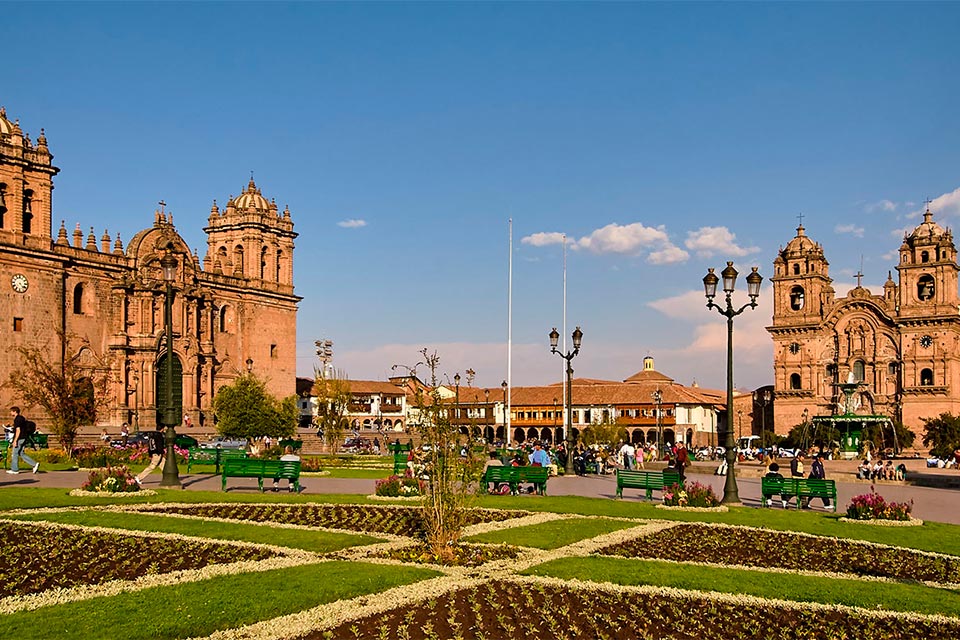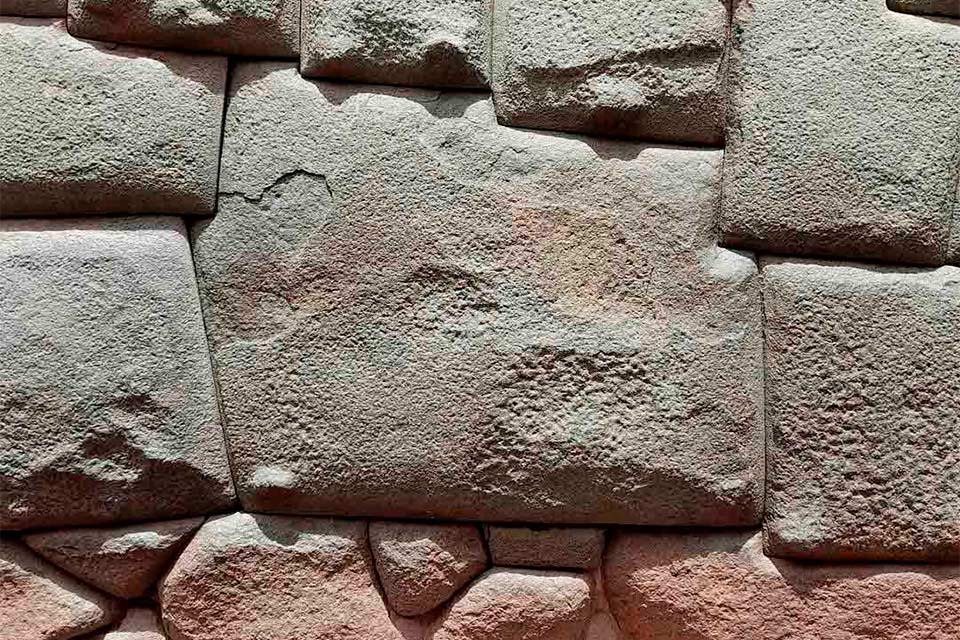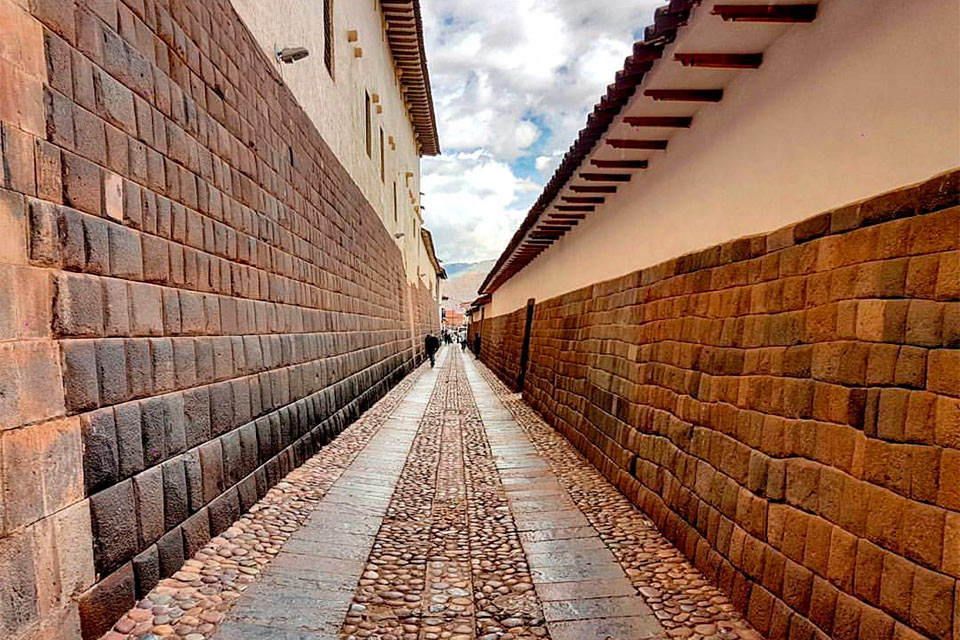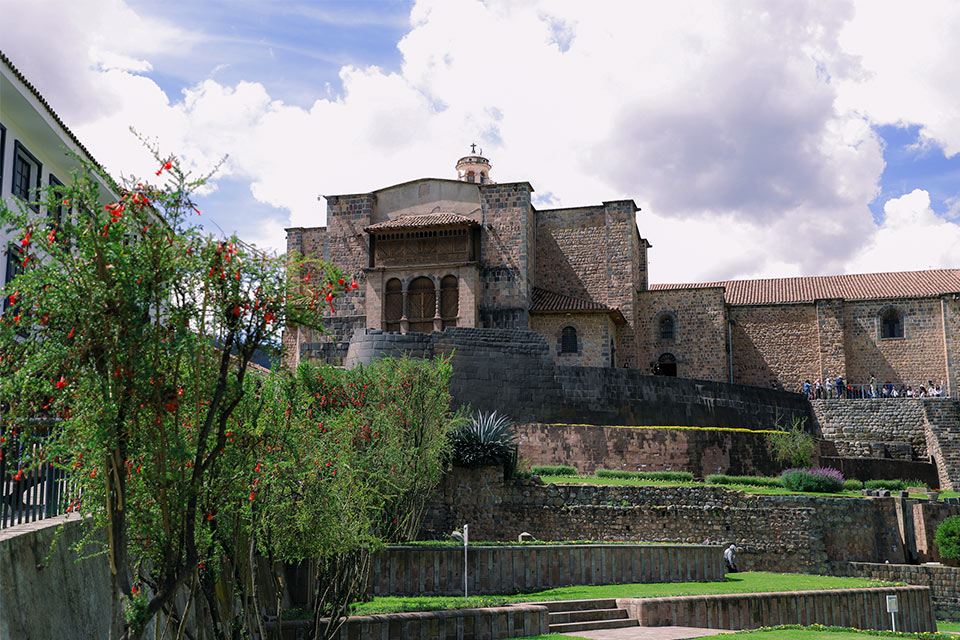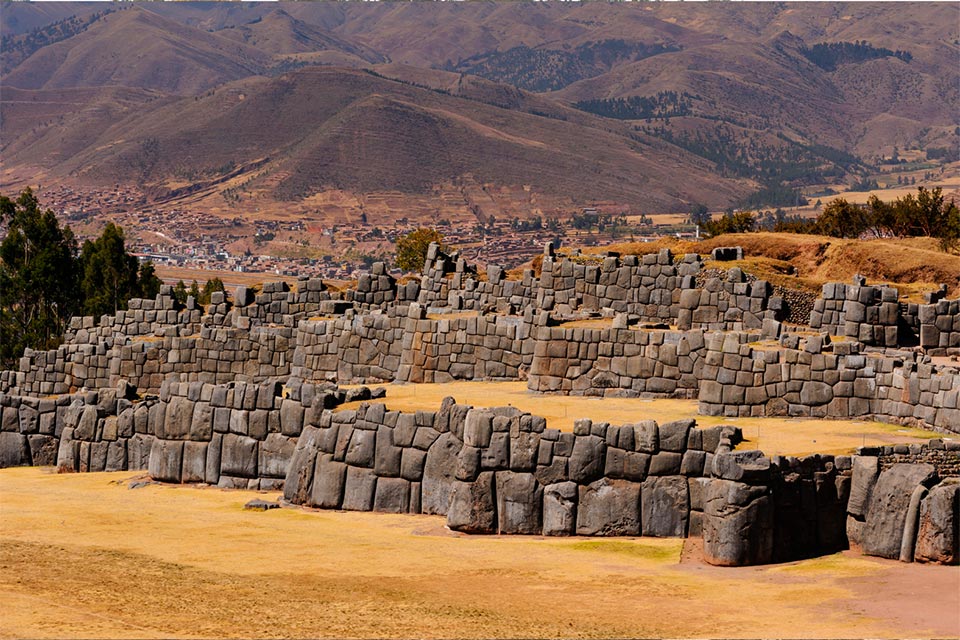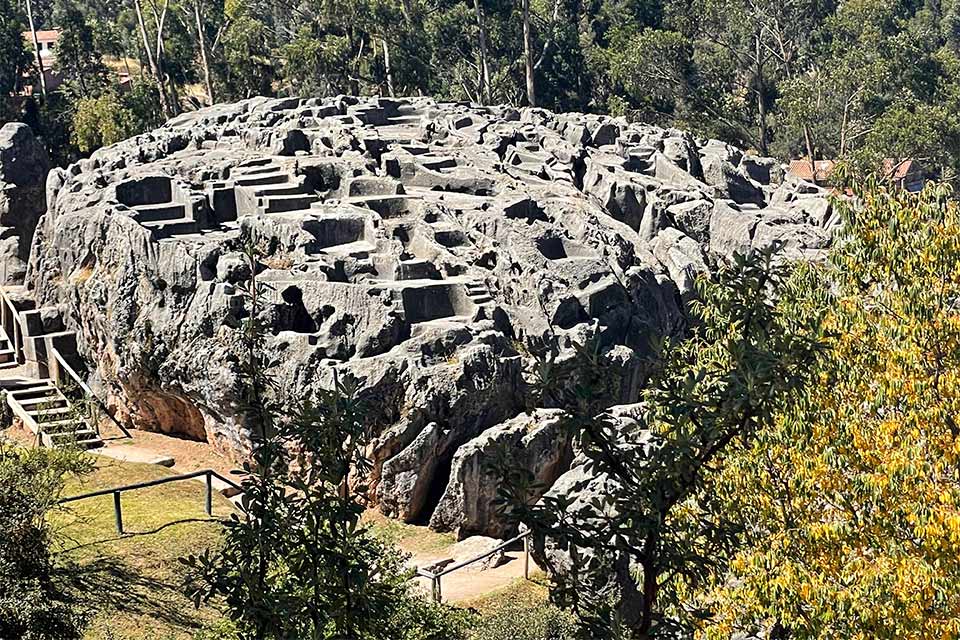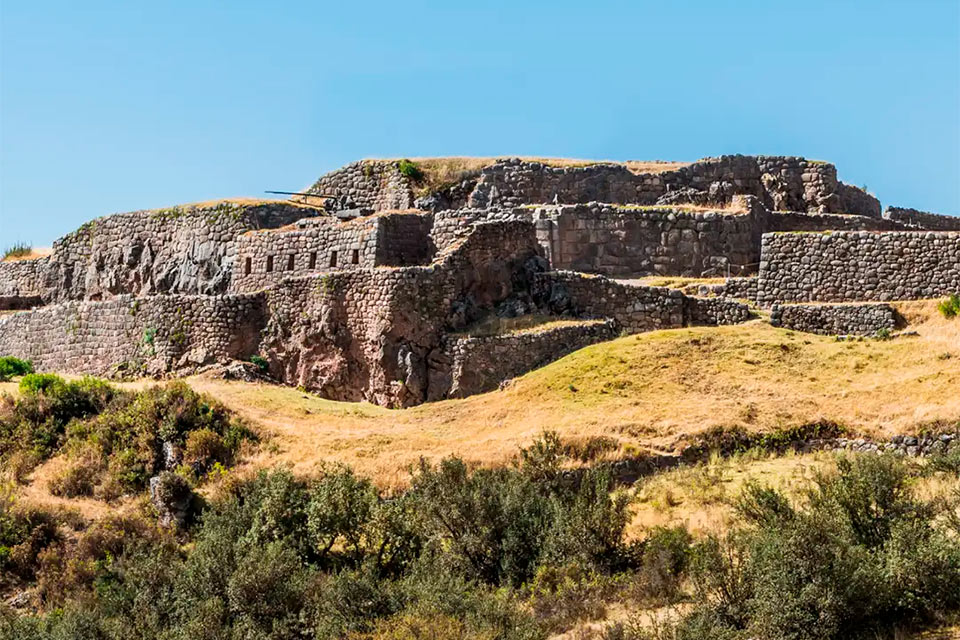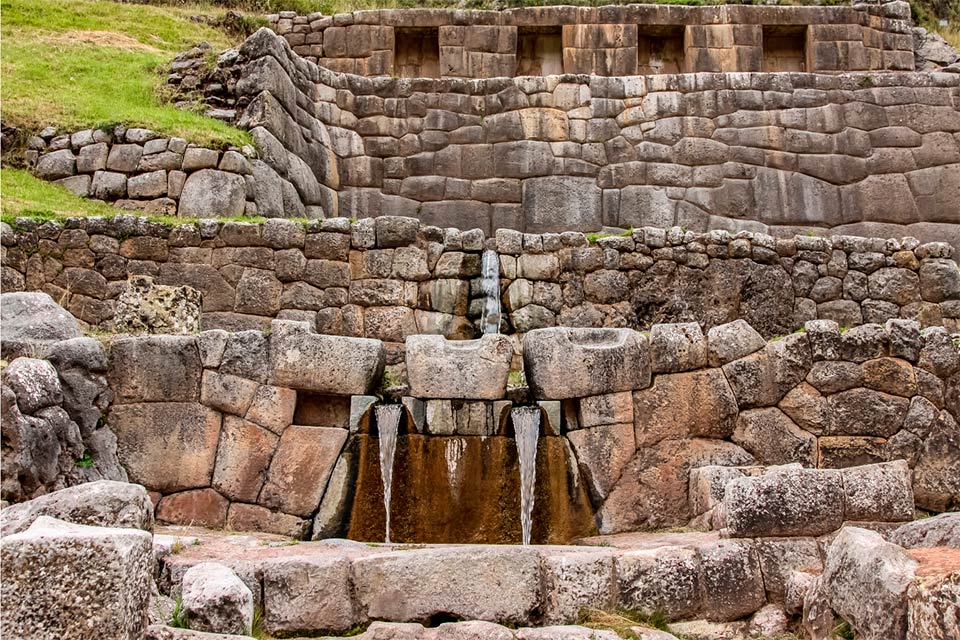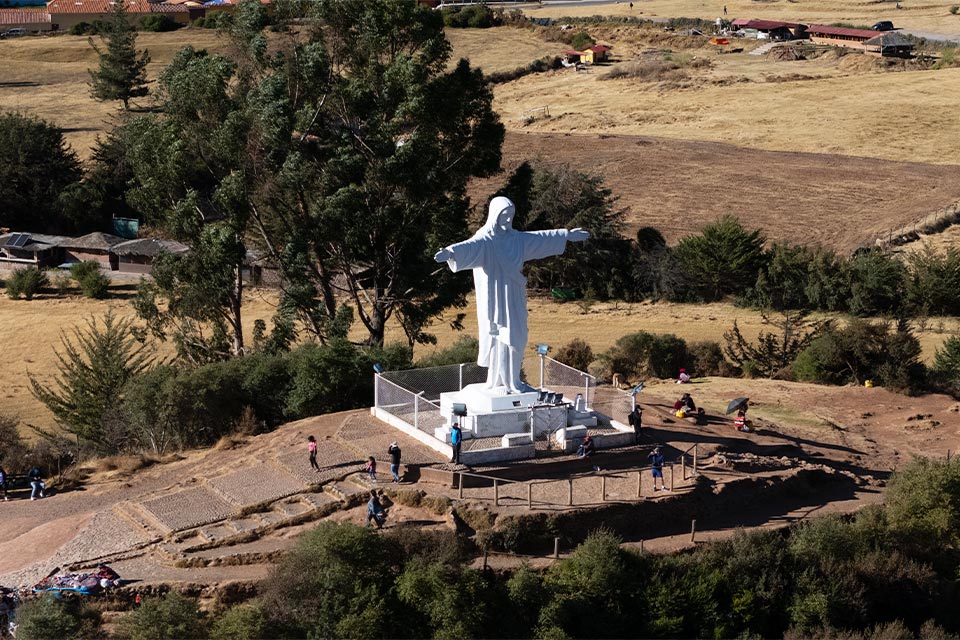Join the Cusco City Tour to see the essentials in one route. Start at Plaza de Armas, framed cozy narrow streets and churches. Walk Hatun Rumiyoc to the famed 12-Angled Stone, then follow Loreto Street toward Coricancha, the Sun Temple later topped by Santo Domingo. Head uphill to Sacsayhuaman’s monumental walls, continue to Qenqo’s carved passages, and stop at Puka Pukara, the Red Fortress above the valley. Visit Tambomachay to admire fine fountains and Inca waterworks.
Finish at Cristo Blanco for sweeping views over the city. Short walks, steady climbs, and plenty of photo stops make this route ideal for a first day in Cusco. Book with us now!
Overview of Cusco City Tour Half-Day
Travel in comfort with a friendly local guide who shares clear stories and practical context, keeps the pace relaxed at altitude, and helps you make the most of every stop while you enjoy the places that define this Andean capital.
Hotel pickup in the historic center keeps things simple, and daily departures in the morning or afternoon fit your plans. Small groups and clear communication from booking to confirmation give you confidence.
This tour has the advantage of being bookable from one day to the next!
Discover Cusco City and explore the most remarkable streets and neighborhoods with us!
Tour Highlights
- Let our friendly team handle pickups, tickets, and timing so you can focus on the experience.
- Learn why Cusco is designated a UNESCO World Heritage Site.
- Begin with a guided circuit of the city’s most significant landmarks.
- See Spanish-era façades set on original Inca stonework.
- Enjoy sweeping views over the surrounding mountains.
- Immerse yourself in living customs, local flavors, and everyday traditions that shape Cusco’s identity.
Cusco City Tour at glance
We will pick you up from your Cusco hotel at 09:00 am or 01:00 pm, depending on your preference. Following, we are going to visit...
- Plaza de Armas of Cusco: Or main square. Home to the beautiful Cathedral of Cusco and the Church of the Society of Jesus (La Compañía de Jesús).
- 12 Angled Stone Street: Watch the famous rock embedded in one of the first Inca palaces.
- Loreto Street: The street with the finest example of Inca architecture.
- Coricancha (The Golden Temple): The most important temple dedicated to the sun, now the Convent of Santo Domingo.
- Sacsayhuaman: You will visit the most imposing construction on the city's outskirts.
- Qenqo: Known for its underground passages.
- Puka Pukara: The "Red Fort" is a strategic site before arriving in Cusco.
- Tambomachay: You will take a guided tour through its aqueducts, canals, and water fountains.
- Cristo Blanco: Enjoy the panoramic view of the city from the most famous statue in the city.
Included
- Door-to-door. Pick up and drop off from your Cusco hotel in the Historic Center.
- Entrance ticket to Coricancha.
- Partial Tourist Ticket – Circuit I (Sacsayhuaman, Qenqo, Puka Pukara, Tambomachay).
- Professional Tour Guide.
Not Included
- Entrance and visit to the Cathedral.
- Meals.
- Travel Insurance.
- Snacks.
- Gratuities.
Extra Upgrades and Private Service
- Private Tour (Your tour guide will accompany you from the moment you leave your hotel until you return). Contact us for more details.
- The Cathedral of Cusco. We can add this visit to your journey in a private service.
- Visit another interesting Cusco museums, in a private service.
Why book with TreXperience?
- Local Expert: Get the best prices and service with a 100% Peruvian company.
- Expert Tour Guides: Our guides are professionals and fluent in English.
- Want more? We also offer the complete tour Sacred Valley VIP + Maras & Moray (Full Day).
Full Itinerary of Cusco City Tour
Departure every day at 1:00 pm (Can be scheduled in the morning at 9:00 am)
We will pick you up from your hotel in Cusco city at 1:00 pm or 9 am and transfer you to the Plaza de Armas, the main square of Cusco, located in the heart of the town, which is surrounded by many historical buildings, including the Cathedral and the Church of the Society of Jesus (La Compañía de Jesús). The square is a popular gathering place for locals and tourists, often used for public events and festivals. You will start a walking tour, exploring Cusco's top attractions, restaurants, and shops.
After the main square, you will walk into the most important streets and neighborhoods, including the 12-angled Stone Street, San Blas, and Loreto Street. Exploring these streets and neighborhoods will give you a great sense of the history and culture of Cusco.
Next, you will visit Coricancha, the Temple of the Sun, a must-visit attraction in Cusco. It was one of the most important temples of the Inca Empire and was dedicated to worshiping the sun god Inti. The temple was covered in gold and decorated with precious stones, making it one of the most impressive structures of the Inca Empire. After the Spanish conquered Cusco, they built the Church of Santo Domingo on top of the temple, using some of the Inca stonework as the foundation for the church.
The second part of the tour starts with a 15-minute drive to Sacsayhuaman, a massive Inca fortress located just outside of Cusco. It is one of the most impressive examples of Inca stonework and engineering, and a visit to this site is a must for anyone interested in the history and culture of the Inca Empire. The fortress is made up of massive stone walls that were built without the use of mortar. The enormous stones weigh over 300 tons and are fitted together with incredible precision. Each year, on June 24th, the Inti Raymi is celebrated at this place to worship the Sun.
Continue driving to Qenqo, known for its underground chambers and passageways. Puka Pukara, a reddish color military fortress, and finally, Tambomachay, known for its series of aqueducts, canals, and waterfalls.
On the way back, you will stop at Cristo Blanco (Statue of Jesus) to enjoy the panoramic views of Cusco and the Andean landscape. The statue of Jesus was a gift from the Palestinian community in Cusco and was installed in 1945. It is made of white stone and stands over 8 meters (26 ft) tall, making it one of the largest statues in the city. The site is famous for tourists and locals, especially at sunset, with stunning views.
Price of the City Tour in Cusco
We operate small-group tours to keep your experience personal and immersive. Traveling with a big party or prefer something exclusive? We also offer a private City Tour in Cusco. Contact us today, and we’ll share the other best tour options and design the perfect itinerary to fit your dates, pace, and interests.
Price per person
- From US$ 50 - Adults
- For 4+ Travelers, contact us to get a special price: info@trexperienceperu.com
Booking and payment
You can pay the tour through our booking system or at our office in Cusco using a credit card, PayPal, or wire transfer. Contact us for alternative payment options.
How to book
To book this tour:
- Click on the BOOK NOW button, choose your travel date, and select the tour option of your choice (group or private service).
- Fill in all the requested details with your passport data. If you can hire a sleeping bag, an air mattress, or trekking poles with us, this is the moment, too.
- Finally, enter your credit/debit card details and make the payment.
- Our team will contact you shortly to reconfirm your payment and give you more information.
Similar tours you might be interested in
What place to visit in my Cusco tour
Plaza de Armas of Cusco (main square)
Cusco’s historic heart, once Huacaypata under the Incas for ceremonies and state gatherings. After the Conquest, it became the colonial hub, framed by the Cathedral and the church of the Society of Jesus (La Compañía de Jesús). Today, it’s a central meeting point, hosting major events like Inti Raymi and bringing together architecture, history, and daily city life.
12 Angled Stone Street
Hatun Rumiyoc is a narrow lane famed for its Inca wall and the 12-angled stone, fitted with remarkable precision without mortar. Often linked to Pachacuti’s reign, it showcases masterful shaping and tight joints across irregular blocks. It’s among Cusco’s most photographed spots; visitors are urged to avoid touching the stones to support preservation.
Loreto Street
Also known as Intik’ijllu, this lane links the Main Square to Coricancha and preserves extended Inca walls built without mortar. A walk along Loreto reveals fine stonework and continuous original stretches that lead toward the Sun Temple, offering a direct thread between today’s city center and enduring Inca architecture.
Coricancha (The Golden Temple)
The foremost Inca temple to Inti was once sheathed in gold. After the Spanish arrived, the Santo Domingo convent rose atop its remains, revealing a striking contrast between colonial church and earthquake-resistant Inca walls. Visitors can still see precise stone joints and hydraulic features pointing to sophisticated water management.
Sacsayhuaman
Monumental complex above Cusco, built with massive limestone and granite blocks set dry. Linked to Pachacuti, it combined defensive and ceremonial roles and figured prominently in Inca resistance. Terraces and colossal stones command broad city views and exemplify large-scale engineering and planning.
Qenqo
A carved limestone outcrop with passages, channels, and chambers, including an amphitheater for rites. Altars and grooves likely supported offerings and symbolic readings; the layout hints at ties to Andean astronomical and ceremonial practices. Qenqo forms a key stop within the archaeological circuit near Cusco.
Puka Pukara
Known as the “Red Fortress” for its stone hue, it overlooks the valley as a control post and administrative point. Terraces, enclosures, and a central plaza reflect military and logistical roles along routes to nearby shrines. The setting helps explain the Inca territorial organization.
Tambomachay
A site linked to water and fertility rites, featuring elegant fountains, channels, and cascades feeding small pools from local springs. Stonework and hydraulic design imply ceremonial use and elite spaces. Just outside Cusco, it complements the circuit with a focus on water management.
Cristo Blanco
A 1945 statue donated by the Arab Palestinian community, set on a viewpoint above the city. The white figure is visible from many districts and is lit at night. It’s a short walk from Sacsayhuaman and a popular stop for wide views of Cusco at sunset and after dark.
What to Bring for my Cusco City Tour
When going on a Cusco City Tour, it's important to pack accordingly to ensure a comfortable and enjoyable experience. Here is a suggested packing list:
- Backpack or daypack: A small backpack or daypack can come in handy to carry all your essentials, such as sunscreen, water, snacks, and a camera.
- Comfortable walking shoes: Cusco City is full of steep hills, cobblestone streets, and uneven terrain. A good pair of walking shoes are required to participate in this tour.
- Lightweight clothing: The weather can be unpredictable, but it's usually warm during the day and chilly at night. Bring lightweight, breathable clothing that can be layered for warmth.
- Sunscreen and hat: The sun can be strong in Cusco City, so it's important to protect your skin with sunscreen and a hat.
- Water bottle: Staying hydrated is important, especially at high altitudes. Bring a refillable water bottle and drink plenty of water throughout the day.
- Snacks: It's a good idea to bring some snacks with you, such as energy bars or fruit, to keep you fueled throughout the day.
- Camera: Cusco is a beautiful city full of history and architecture, so bring a camera to capture all the sights and memories.
- Cash: Although credit cards are accepted in many places in Cusco City, carrying some cash with you for small purchases and tipping is always a goodidea.
- Personal medication: If you take any medication, be sure to pack enough for the duration of your trip.
- Rain gear: Cusco City experiences rain showers throughout the year, so it's a good idea to pack a rain jacket or umbrella just in case.
It's important to keep in mind that the altitude in Cusco can affect some people, so be sure to rest and hydrate often and be aware of any symptoms of altitude sickness.
What to know before visiting Cusco City
Best time to visit Cusco
The most reliable weather arrives in the dry season from May to September, with bright days around 18–20 °C and cold nights, ideal for city walks and nearby ruins.
June is the busiest month due to Inti Raymi, so permits and hotels sell out early.
April and October are great shoulder months with fewer crowds and still-good conditions.
From November to March, rains are frequent, lush scenery and lower prices come with slippery trails and occasional disruptions.
Cusco Altitude
Cusco sits at about 3,400 m (11,150 ft), which means thinner air and a slower pace for the first 24–48 hours for tourists who have just arrived in Cusco.
Many travelers feel short of breath on hills or stairs, mild headache, or experience fatigue while the body adapts.
The Altitude Sickness
Altitude sickness can appear above 2,500 m and usually shows as headache, nausea, dizziness, or poor sleep; rest, hydration, and a gentle pace are the first steps.
Ease in with light walking on day one, drink plenty of water, choose small meals, and limit alcohol. Dress in layers for cool mornings and evenings, and remember sun protection, high elevation increases exposure.
Coca tea or candies may provide comfort for some people, and many hotels keep oxygen available; talk to your doctor about preventive medication such as acetazolamide if you have concerns. If symptoms worsen, severe headache, vomiting, confusion, chest tightness, or trouble breathing, stop ascending, seek medical help, and consider descending. Most travelers improve within a day or two with sensible acclimatization.
Cusco Tourist Ticket
The Cusco Tourist Ticket (Boleto Turístico) It's a single ticket that includes admission to various archaeological sites and museums. It's provided by COSITUC, the Committee on Integrated Cultural Tourism Services of the Municipality of Cusco. It is required to enter most archaeological sites in the Sacred Valley, the city of Cusco, and several museums. This tour already includes the Partial Tourist Ticket – Circuit I (Sacsayhuaman, Qenqo, Puka Pukara, Tambomachay). But if you plan to visit more places on your own, you can also purchase the full ticket.
Check out what’s included in the Cusco Tourist Ticket.
Partial Cusco tourist ticket – Sacsayhuaman complex only
- Peruvians: S/. 40
- Foreigners: S/. 70
Valid for 1 - 2 days.
Integral Cusco tourist ticket – All circuits (Cusco + Sacred Valley + museums)
- Peruvians: S/. 70
- Foreigners: S/. 130
Valid for 10 days.
Cusco City Tour Frequently Asked Questions
Is the tour wheelchair accessible?
Unfortunately, the tour is not wheelchair accessible due to the terrain and walking involved. However, with assistance, it is possible to visit the Inca sites.
Do you pick up from Airbnbs or only from hotels in downtown Cusco?
Pickup is available from Airbnb located in the city center, too!
Do you have an alternate office/meeting point if my hotel is outside the historic center?
If your hotel is outside the pickup zone (Cusco historical center), we’ll assign a central meeting point in our sales office on Garcilaso Street 210, Cusco or in the central fountain in the main square.
Which ticket do I need for the city tour of Cusco, Partial or General Tourist Ticket?
Our Cusco City Tour uses the Partial Tourist Ticket that includes Sacsayhuaman, Qenqo, Puka Pukara, and Tambomachay.
The General Ticket covers more sites and days; choose it only if you plan extra visits (this is not included in our tour)
Are there student discounts on the city tour?
Unfortunately, there is no student discount available for this tour.
What happens if I am not at my hotel at the pick-up time for the city tour in Cusco?
Contact our operations number immediately. When possible, we indicate the next stop so you can rejoin the group.
Are drones, tripods, or flash allowed during the city tour?
Drone use is restricted and requires permits; tripods and flash in churches and museums too. Always follow on-site rules.

